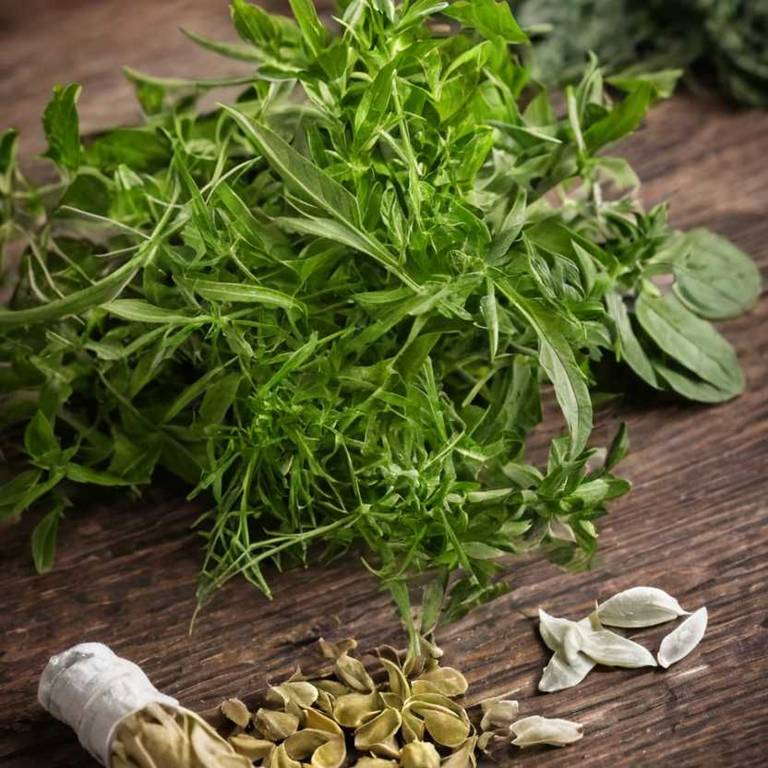By Leen Randell
Updated: Jul 06, 2024
What to know about Citrullus colocynthis (bitter melon) before using it medicinally

Citrullus colocynthis, commonly known as bitter melon, is a herb renowned for its wealth of health benefits, from lowering blood sugar levels to reducing inflammation and improving digestion.
A low-maintenance plant, Citrullus colocynthis is prized for its hardiness and ability to thrive in a variety of climates and soil types. From a botanical perspective, Citrullus colocynthis belongs to the Cucurbitaceae family, characterized by its distinctive, ribbed, and warty skin.
In traditional medicine, Citrullus colocynthis has been referenced for centuries, with ancient civilizations such as the Egyptians and Greeks utilizing its extracts for medicinal purposes.
This article explains the medicinal, horticultural, botanical, and historical aspects of Citrullus colocynthis.
What are the medicinal properties of Citrullus colocynthis?
Citrullus colocynthis helps with various health conditions, including diabetes management, weight loss, and reducing inflammation. It is also used to treat fever, skin conditions, and as an anthelmintic agent.
The active constituents of Citrullus colocynthis include citrulline, cucurbitacins, and cucurbitane triterpenoids, which give the plant its medicinal properties. These compounds have been shown to have antioxidant, anti-inflammatory, and antidiabetic effects.
The parts of the plant used for medicinal purposes are the fruit, seeds, and leaves. The fruit, in particular, is rich in citrulline, making it a popular choice for nutritional supplements. The seeds and leaves are also used to prepare traditional remedies for various health conditions.
Improper use of Citrullus colocynthis can cause gastrointestinal upset, including nausea, vomiting, and diarrhea. High doses of the plant may also lead to kidney damage and interact with certain medications, including blood thinners and diabetes medications.
Precautions when using Citrullus colocynthis medicinally include pregnant or breastfeeding women avoiding its use due to potential teratogenic effects. Individuals with kidney or liver disease should also consult a healthcare professional before consuming the plant.
What are the horticulural aspects of Citrullus colocynthis?
Citrullus colocynthis grow best in well-draining soil and full sun, requiring a temperature range of 18-30°C (64-86°F) for optimal growth. It is a warm-season crop, typically thriving in areas with low humidity and moderate rainfall. Soil pH between 6.0-7.0 is ideal.
For successful planting, seeds are sown directly into the ground in late spring, after the last frost. Sow 2-3 seeds per hill, 1-2 inches deep, and 1-2 feet apart. Thin to one strong seedling per hill. Water deeply and consistently, especially during fruiting stage.
For optimal harvesting, monitor the fruit regularly, starting when they reach 6-8 inches long and 1 inch in diameter. Harvest in the morning, when the fruit is firm and slightly tender to the touch. Use scissors to cut the fruit from the vine, leaving a small stem attached to the plant. Harvest all fruit at once, or pick individual fruit as needed.
Common pests affecting Citrullus colocynthis include aphids, whiteflies, and spider mites. Fungal diseases, such as powdery mildew and anthracnose, are also prevalent. Regularly inspect the plant for signs of infestation or disease and take prompt action to prevent spreading. Use integrated pest management strategies to minimize chemical use.
What are the botanical aspects of Citrullus colocynthis?
Citrullus colocynthis is a vining plant with long, creeping stems and tendrils that allow it to climb up supports. Its leaves are palmate with 5-7 lobes, and its flowers are unisexual and yellow in color. Fruits are ribbed and green, growing up to 30 cm long.
Citrullus colocynthis is a member of the Cucurbitaceae family, classified as a species of Citrullus, and its closest relative is the watermelon (Citrullus lanatus). It is also known as bitter gourd, and its taxonomic classification is as follows: Kingdom: Plantae, Clade: Angiosperms, Clade: Eudicots, Order: Cucurbitales, Family: Cucurbitaceae, Genus: Citrullus, Species: C. colocynthis.
There are several variants of Citrullus colocynthis, including 'Gac' (a variant grown in Vietnam), 'Makham' (a Thai variant), and 'Bitter Ball' (a variant grown in Africa). These variants differ in fruit size, shape, and flavor.
Citrullus colocynthis is native to Africa and Asia, and its geographical distribution extends from the Mediterranean region to India and Southeast Asia. It has been naturalized in other parts of the world, including the Americas, Australia, and the Pacific Islands.
The life cycle of Citrullus colocynthis is as follows: the plant germinates in 5-10 days, and its growth phase lasts for 3-4 months. The plant produces both male and female flowers on the same plant, which are pollinated by insects and wind. The fruits mature in 3-4 months, and the plant can produce multiple harvests in a year.
What are the historical aspects of Citrullus colocynthis?
Citrullus colocynthis is a plant with a long history of use in traditional medicine. It has been used for centuries in various cultures to treat fever, rheumatism, and skin conditions. In Ayurvedic medicine, it is considered a bitter and astringent herb.
In ancient mythology, bitter melon was associated with the god of fertility, Dionysus. In Hindu mythology, the goddess Parvati was said to have used the plant to cure her husband, Shiva. In some African cultures, the plant was believed to have magical powers. The Yoruba people of Nigeria associated it with the god of fertility, Oshun.
In many cultures, bitter melon is a symbol of protection and good luck. In some Asian cultures, it is considered a symbol of fertility and prosperity. In other cultures, it is seen as a symbol of good health and longevity. The plant's bitter taste is said to ward off evil spirits.
In historical texts, bitter melon is mentioned in the works of ancient Greek physician Hippocrates and Roman naturalist Pliny the Elder. In Ayurvedic texts, such as the Charaka Samhita and the Sushruta Samhita, the plant is described as having various medicinal properties.
Historical artifacts that feature bitter melon include ancient Greek and Roman pottery and textiles, which depict the plant in various contexts. In Asian art, the plant is often depicted in traditional paintings and sculptures.